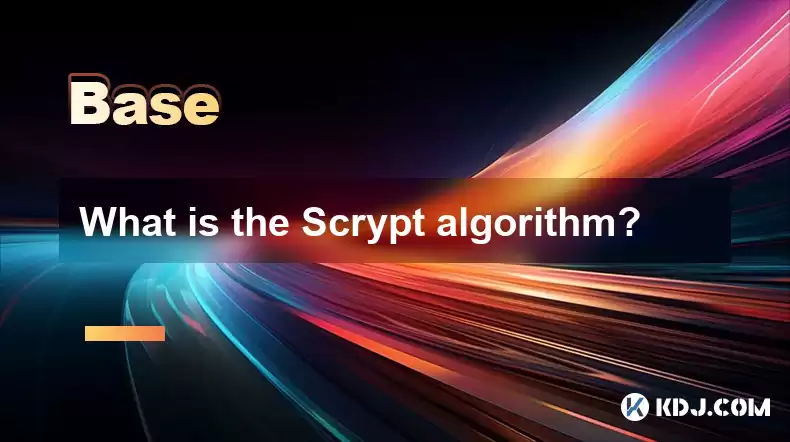-
 Bitcoin
Bitcoin $114200
0.00% -
 Ethereum
Ethereum $3637
0.56% -
 XRP
XRP $2.950
-2.01% -
 Tether USDt
Tether USDt $0.9999
0.02% -
 BNB
BNB $761.0
0.55% -
 Solana
Solana $164.1
-1.38% -
 USDC
USDC $0.9999
0.02% -
 TRON
TRON $0.3332
0.36% -
 Dogecoin
Dogecoin $0.2012
-0.52% -
 Cardano
Cardano $0.7261
-1.41% -
 Hyperliquid
Hyperliquid $37.62
-2.13% -
 Stellar
Stellar $0.3930
-2.65% -
 Sui
Sui $3.441
-0.16% -
 Bitcoin Cash
Bitcoin Cash $563.8
0.70% -
 Chainlink
Chainlink $16.50
0.09% -
 Hedera
Hedera $0.2424
-0.14% -
 Ethena USDe
Ethena USDe $1.001
0.01% -
 Avalanche
Avalanche $22.20
0.00% -
 Litecoin
Litecoin $118.0
-2.48% -
 UNUS SED LEO
UNUS SED LEO $8.991
0.12% -
 Toncoin
Toncoin $3.195
-3.87% -
 Shiba Inu
Shiba Inu $0.00001217
0.12% -
 Uniswap
Uniswap $9.674
-0.21% -
 Polkadot
Polkadot $3.633
1.00% -
 Monero
Monero $295.3
-0.82% -
 Dai
Dai $0.9999
0.00% -
 Bitget Token
Bitget Token $4.321
-0.41% -
 Cronos
Cronos $0.1392
0.73% -
 Pepe
Pepe $0.00001027
-0.89% -
 Aave
Aave $258.5
0.32%
What is the Scrypt algorithm?
Scrypt, designed by Colin Percival in 2009, is a memory-intensive hash function used in Litecoin to resist ASIC mining and enhance password security.
Apr 08, 2025 at 01:49 pm

The Scrypt algorithm is a cryptographic hash function that is specifically designed to be memory-intensive and computationally expensive. It was created by Colin Percival in 2009 as a means to enhance the security of password-based key derivation functions. In the realm of cryptocurrencies, Scrypt gained prominence as the underlying algorithm for Litecoin, which was introduced as a lighter and faster alternative to Bitcoin. The primary purpose of Scrypt is to make it more resistant to brute-force attacks by requiring significant amounts of memory, thereby making it less feasible for attackers to use specialized hardware like ASICs (Application-Specific Integrated Circuits) to crack passwords or mine cryptocurrencies.
Origins and Purpose of Scrypt
Scrypt was developed with the intention of being a more secure alternative to traditional hash functions like SHA-256. The key innovation of Scrypt lies in its memory-hard nature, which means that it requires a substantial amount of memory to compute. This design choice was made to counteract the effectiveness of brute-force attacks, which are commonly used to crack passwords or mine cryptocurrencies. By making the algorithm memory-intensive, Scrypt aims to level the playing field, ensuring that attackers cannot gain a significant advantage by using specialized hardware.
How Scrypt Works
The Scrypt algorithm operates by taking an input, such as a password, and transforming it into a fixed-size output through a series of steps. These steps include:
- Salting: A random value, known as a salt, is added to the input to ensure that identical inputs produce different outputs.
- Key Derivation: The salted input is then passed through a key derivation function, which involves multiple iterations of hashing and memory-intensive operations.
- Hashing: The final output is generated through a cryptographic hash function, resulting in a fixed-size output that is unique to the input and salt.
The memory-intensive nature of Scrypt is achieved through the use of a large pseudo-random function that requires a significant amount of memory to compute. This makes it more difficult for attackers to use parallel processing techniques to speed up the computation.
Scrypt in Cryptocurrencies
In the world of cryptocurrencies, Scrypt is most notably used as the proof-of-work algorithm for Litecoin. Litecoin was created by Charlie Lee in 2011 and was designed to be a more accessible alternative to Bitcoin. The use of Scrypt as its proof-of-work algorithm was a deliberate choice to make Litecoin mining more resistant to ASICs, thereby allowing more individuals to participate in the mining process using consumer-grade hardware.
Other cryptocurrencies that use Scrypt include Dogecoin, which was created as a fun and accessible cryptocurrency, and numerous other altcoins that have adopted Scrypt as their mining algorithm. The use of Scrypt in these cryptocurrencies has helped to maintain a more decentralized mining ecosystem, as it is more difficult for large mining operations to dominate the network using specialized hardware.
Advantages of Scrypt
The Scrypt algorithm offers several advantages over other cryptographic hash functions, particularly in the context of cryptocurrencies:
- Resistance to ASICs: By being memory-intensive, Scrypt makes it more difficult for attackers to use ASICs to mine cryptocurrencies or crack passwords. This helps to maintain a more decentralized mining ecosystem and enhances the security of password-based systems.
- Enhanced Security: The memory-hard nature of Scrypt makes it more resistant to brute-force attacks, as attackers need to allocate significant amounts of memory to perform the computations. This enhances the security of password-based systems and makes it more difficult for attackers to compromise them.
- Accessibility: The use of Scrypt in cryptocurrencies like Litecoin and Dogecoin has made mining more accessible to individuals using consumer-grade hardware. This has helped to foster a more inclusive and decentralized mining community.
Limitations of Scrypt
Despite its advantages, Scrypt also has some limitations that are worth considering:
- Increased Resource Requirements: The memory-intensive nature of Scrypt means that it requires more resources to compute than other hash functions. This can make it less efficient for certain applications and may limit its use in resource-constrained environments.
- ASIC Resistance: While Scrypt was designed to be resistant to ASICs, specialized hardware has been developed to mine Scrypt-based cryptocurrencies more efficiently. This has somewhat diminished the effectiveness of Scrypt in maintaining a decentralized mining ecosystem.
- Complexity: The complexity of the Scrypt algorithm can make it more challenging to implement and optimize compared to simpler hash functions. This may limit its adoption in certain applications where simplicity and efficiency are prioritized.
Scrypt vs. Other Algorithms
When comparing Scrypt to other cryptographic hash functions, it is important to consider the specific use case and requirements. For example, SHA-256, which is used by Bitcoin, is a simpler and more efficient algorithm that is well-suited for general-purpose hashing. However, it is more susceptible to ASIC-based attacks, which can lead to a more centralized mining ecosystem.
In contrast, Scrypt is designed to be more secure and resistant to ASICs, making it a better choice for applications where security and decentralization are paramount. Other algorithms, such as Ethash (used by Ethereum) and Equihash (used by Zcash), have also been developed to address similar concerns and offer different trade-offs in terms of security, efficiency, and accessibility.
Frequently Asked Questions
Q: Can Scrypt be used for purposes other than cryptocurrency mining?
A: Yes, Scrypt can be used for a variety of purposes beyond cryptocurrency mining. Its primary use is in password-based key derivation functions, where it helps to enhance the security of password storage systems. Scrypt can also be used in other cryptographic applications where a memory-hard hash function is beneficial, such as in the generation of cryptographic keys or the creation of digital signatures.
Q: How does the memory requirement of Scrypt affect its performance on different hardware?
A: The memory requirement of Scrypt can significantly impact its performance on different hardware. On systems with limited memory, such as older computers or mobile devices, Scrypt may be slower and less efficient due to the need to allocate and manage large amounts of memory. In contrast, systems with ample memory, such as modern desktops and servers, can handle Scrypt more efficiently, as they can allocate the required memory more easily.
Q: Are there any alternatives to Scrypt that offer similar security benefits?
A: Yes, there are several alternatives to Scrypt that offer similar security benefits. One such alternative is Argon2, which won the Password Hashing Competition in 2015. Argon2 is designed to be memory-hard and resistant to GPU-based attacks, making it a strong contender for password-based key derivation functions. Another alternative is Bcrypt, which is also designed to be slow and computationally expensive, making it suitable for password hashing.
Q: How has the development of ASICs for Scrypt mining affected its original purpose?
A: The development of ASICs for Scrypt mining has somewhat diminished its original purpose of maintaining a decentralized mining ecosystem. While Scrypt was designed to be resistant to ASICs, specialized hardware has been developed to mine Scrypt-based cryptocurrencies more efficiently. This has led to a more centralized mining ecosystem for some Scrypt-based cryptocurrencies, as large mining operations can use these ASICs to gain a competitive advantage. However, the memory-intensive nature of Scrypt still provides some level of resistance to ASICs compared to simpler algorithms like SHA-256.
Disclaimer:info@kdj.com
The information provided is not trading advice. kdj.com does not assume any responsibility for any investments made based on the information provided in this article. Cryptocurrencies are highly volatile and it is highly recommended that you invest with caution after thorough research!
If you believe that the content used on this website infringes your copyright, please contact us immediately (info@kdj.com) and we will delete it promptly.
- Binance, CZ, and the FTX Fallout: The $1.8 Billion Question
- 2025-08-06 18:30:12
- Brendan Rodgers, Celtic, and the Greg Taylor Role: A Tactical Conundrum
- 2025-08-06 18:50:12
- Coinbase Stock, Investment, and Earnings: Navigating Crypto's Tides
- 2025-08-06 18:55:54
- DALPY Coin: Investor Buzz Swirls Around Upcoming 'Game-Changing' Features
- 2025-08-06 18:30:12
- Fast-Moving Cryptos: Could Pudgy Penguins Deliver High Gains by 2025?
- 2025-08-06 16:30:11
- Crypto Gaming Tokens: August 2025 Investment Opportunities
- 2025-08-06 16:50:12
Related knowledge

What is the difference between CeFi and DeFi?
Jul 22,2025 at 12:28am
Understanding CeFi and DeFiIn the world of cryptocurrency, CeFi (Centralized Finance) and DeFi (Decentralized Finance) represent two distinct financia...

How to qualify for potential crypto airdrops?
Jul 23,2025 at 06:49am
Understanding What Crypto Airdrops AreCrypto airdrops refer to the distribution of free tokens or coins to a large number of wallet addresses, often u...

What is a crypto "airdrop farmer"?
Jul 24,2025 at 10:22pm
Understanding the Role of a Crypto 'Airdrop Farmer'A crypto 'airdrop farmer' refers to an individual who actively participates in cryptocurrency airdr...

What is the difference between a sidechain and a Layer 2?
Jul 20,2025 at 11:35pm
Understanding the Concept of SidechainsA sidechain is a separate blockchain that runs parallel to the main blockchain, typically the mainnet of a cryp...

What is the Inter-Blockchain Communication Protocol (IBC)?
Jul 19,2025 at 10:43am
Understanding the Inter-Blockchain Communication Protocol (IBC)The Inter-Blockchain Communication Protocol (IBC) is a cross-chain communication protoc...

How does sharding improve scalability?
Jul 20,2025 at 01:21am
Understanding Sharding in BlockchainSharding is a database partitioning technique that is increasingly being adopted in blockchain technology to enhan...

What is the difference between CeFi and DeFi?
Jul 22,2025 at 12:28am
Understanding CeFi and DeFiIn the world of cryptocurrency, CeFi (Centralized Finance) and DeFi (Decentralized Finance) represent two distinct financia...

How to qualify for potential crypto airdrops?
Jul 23,2025 at 06:49am
Understanding What Crypto Airdrops AreCrypto airdrops refer to the distribution of free tokens or coins to a large number of wallet addresses, often u...

What is a crypto "airdrop farmer"?
Jul 24,2025 at 10:22pm
Understanding the Role of a Crypto 'Airdrop Farmer'A crypto 'airdrop farmer' refers to an individual who actively participates in cryptocurrency airdr...

What is the difference between a sidechain and a Layer 2?
Jul 20,2025 at 11:35pm
Understanding the Concept of SidechainsA sidechain is a separate blockchain that runs parallel to the main blockchain, typically the mainnet of a cryp...

What is the Inter-Blockchain Communication Protocol (IBC)?
Jul 19,2025 at 10:43am
Understanding the Inter-Blockchain Communication Protocol (IBC)The Inter-Blockchain Communication Protocol (IBC) is a cross-chain communication protoc...

How does sharding improve scalability?
Jul 20,2025 at 01:21am
Understanding Sharding in BlockchainSharding is a database partitioning technique that is increasingly being adopted in blockchain technology to enhan...
See all articles

























































































